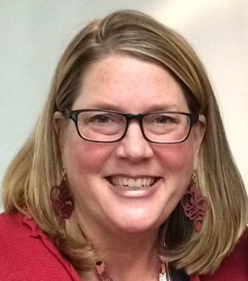Strategic Plan: A Roadmap to Success!

By Timi Tullis, AASB Associate Executive Director
Most Alaskans travel! Each time we get on a plane, in a boat, or on a snow machine, we set out on an adventure. To make the most of these adventures we need a plan. Where are we going? How will we get to our desired location? How long will it take us? Where will we stay? What will we do when we get there? All of these factors require attention, so that our journey results in a satisfying and successful experience.
The questions school districts must ask themselves are similar: What are the priorities of our district? What is important to our community/communities? How do we get there? Capturing the answers to these questions in a Strategic Plan that supports all stakeholders involved will serve as your district’s roadmap to successful outcomes.
How often should a Strategic Plan be updated?
Without a current plan, its easy to get lost along the way to your destination. AASB encourages every school district to have a strategic plan that sets the direction for the next 3-5 years.
The Plan should focus on the district’s priorities and action plans in the areas of student learning and achievement, based on input from stakeholders. Strategic Plans also provide clear guidance for superintendents and staff, help keep the focus on outcomes, and are useful for evaluating the superintendent based on goals laid out in the plan.
Who develops a school district’s Strategic Plan?
The Board should direct the superintendent to come to the board with options on updating the plan. Often this involves bringing in a facilitator who can help streamline the process. AASB offers this service, and we suggest the district invite key partners, Tribal leaders, business partners, parents, high school students, both classified and certified staff, as well as representation from the board.
We at AASB feel that, ultimately, Strategic Plans and the strategic planning process are an essential form of accountability and public involvement. The plan should be something developed by the community, for the community. The planning process allows all stakeholders to discuss their vision for the education of their children and the best methods for achieving that vision. All stakeholders, then, can determine how their work fits into the plan and how they can support schools and students in their efforts to achieve their goals.
How do we get started?
To begin, the board should ask the superintendent to take these steps:
- Investigate and present to the board options for development of a plan.
- Once the board determines the pathway they want, the superintendent can contract with a facilitator.
- Secure a date, time, and location for the planning process to occur.
- Invite the desired members of the community to participate.
During their time together the group will:
- Review and update the current mission, vision, beliefs, and aspirations of the district.
- Conduct a “SWOT” looking at the Strengths, Weaknesses, Opportunities, and Threats to the district.
- Develop objectives and strategies to focus on for the next 3-5 years.
- Align activities with each of strategies.
- Share the final product with the community. On an annual basis share updates with the board and, in turn, the community.
After the plan is in place and rolled out, we suggest you align action items on your agenda to the plan, so that the work you’re doing stays consistent with goals.
Following these steps will help to ensure that your district has a productive and rewarding journey to its ultimate destination, student success!
More Information
To discuss the development or review of your Strategic Plan, email Timi Tullis.
# # #
